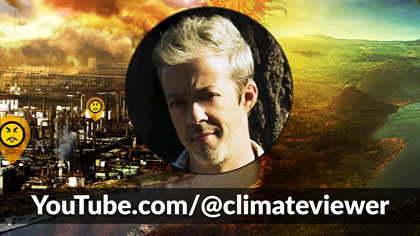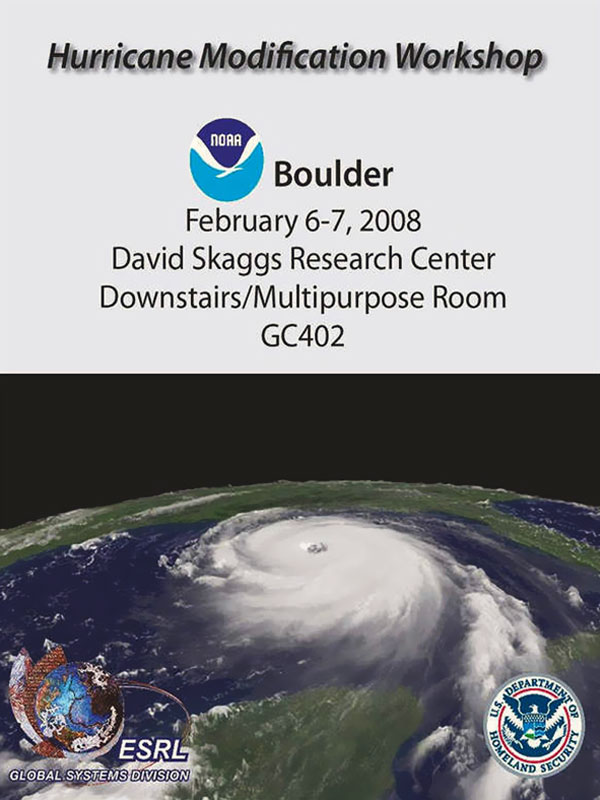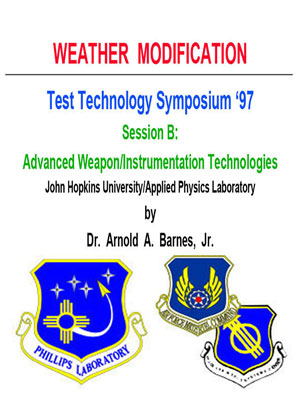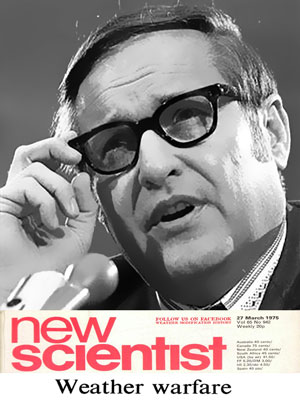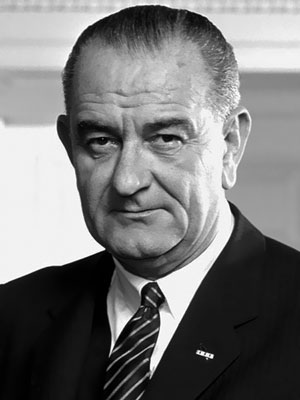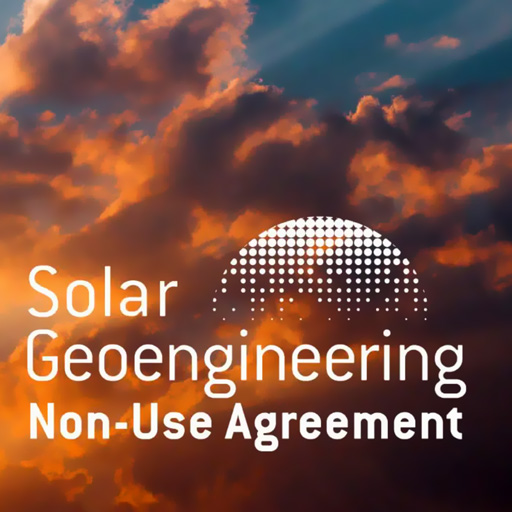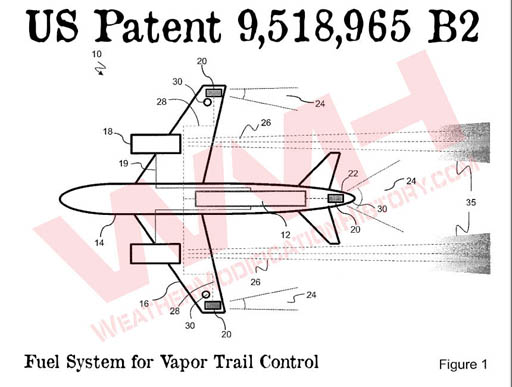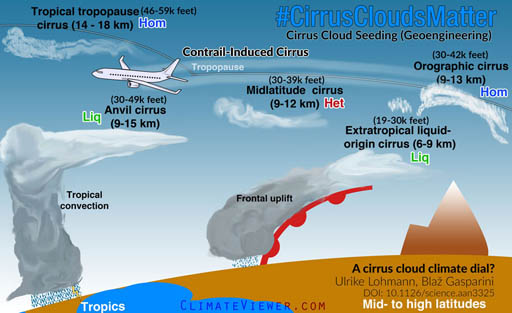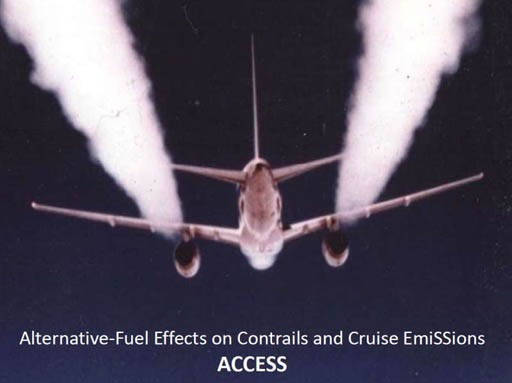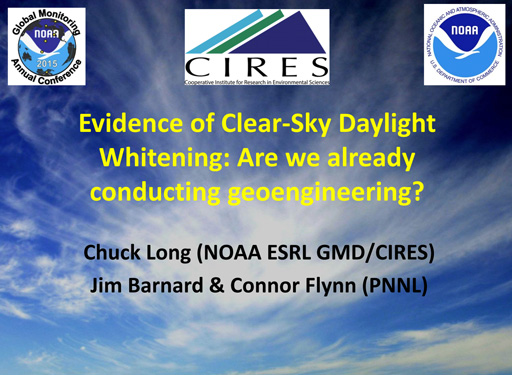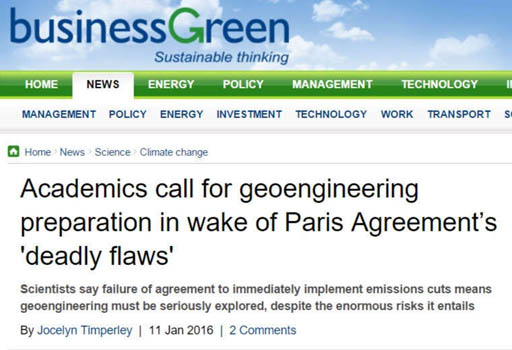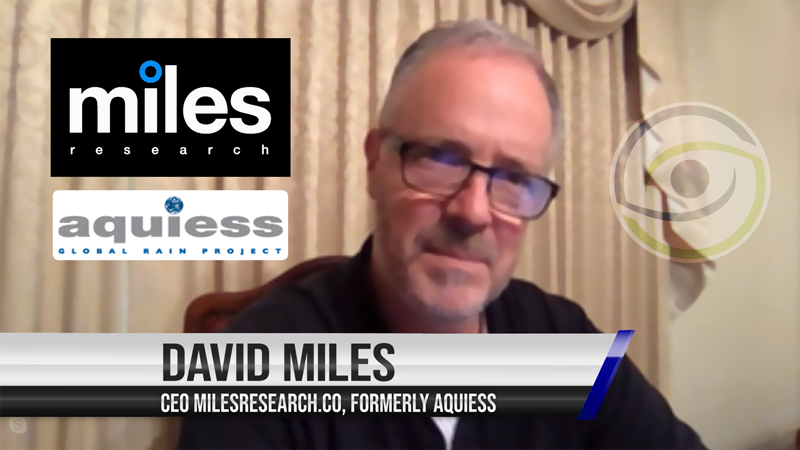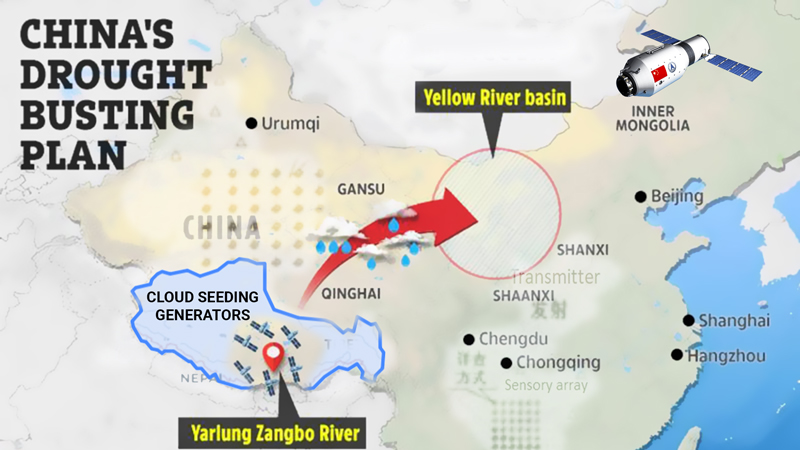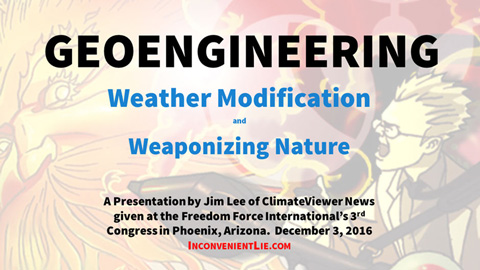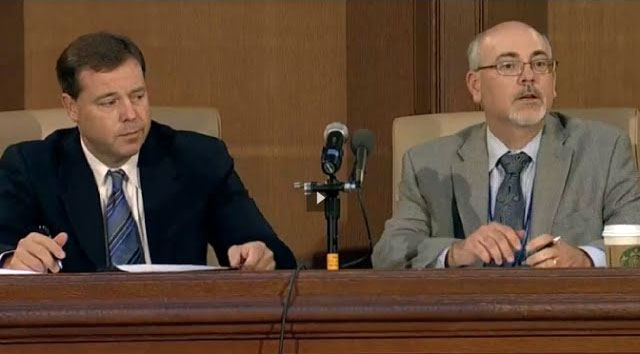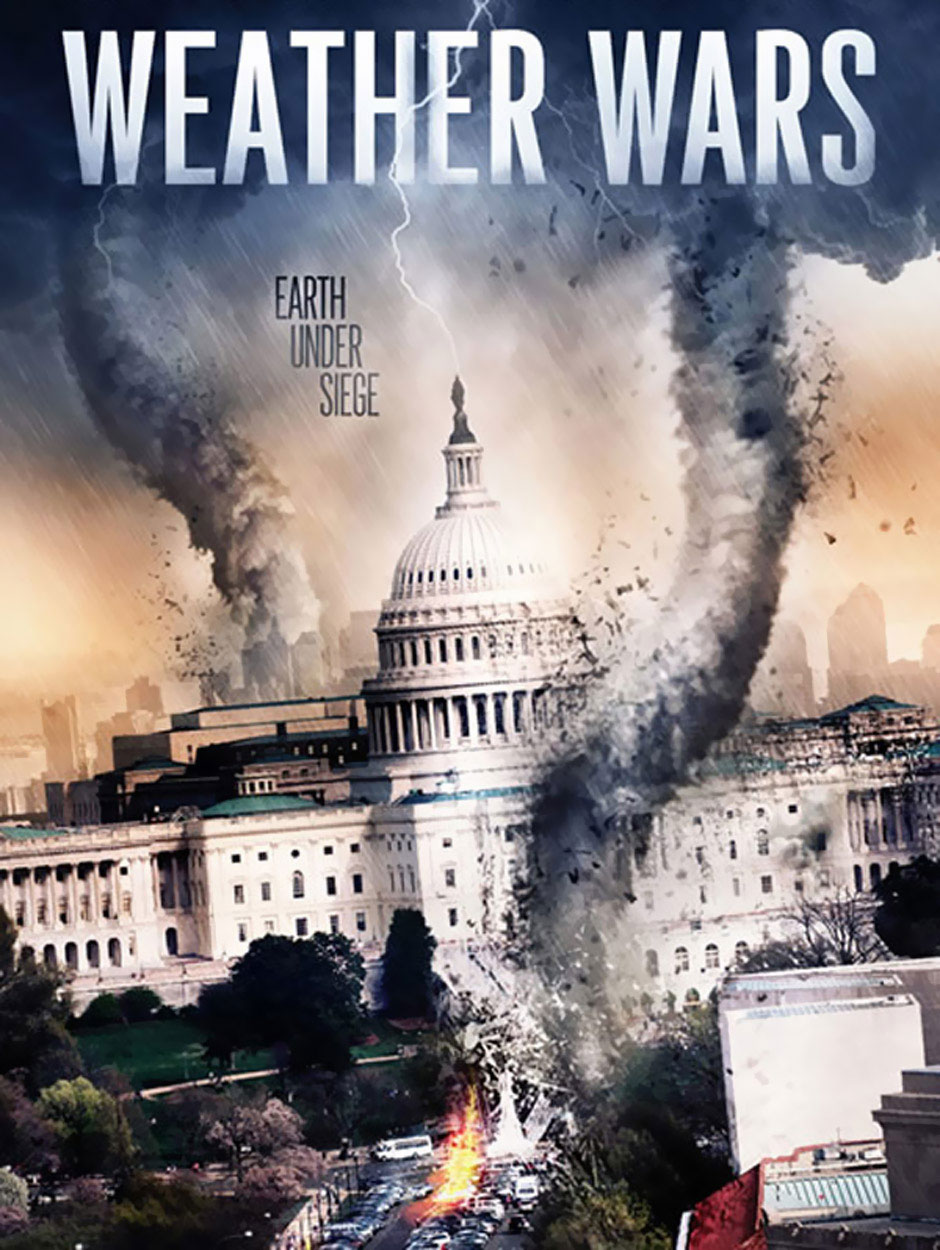
Below are the laws governing weather control experiments and operations in the USA, if you are able to find any laws I missed, please comment below with links.
International Law
1978 The Environmental Modification Convention (ENMOD) - Convention on the Prohibition of Military and Other Hostile Use of Environmental Modification Techniques (Weather Warfare Ban)
In its Article I the Convention, which is part of disarmament efforts, prohibits the Contracting Parties from engaging in "military or any other hostile use of environmental modification techniques having widespread, long-lasting or severe effects as the means of destruction, damage or injury to any other State Party". Article 2 specifies what is meant exactly by the term "environmental modification techniques".
The Environmental Modification Accountability Act of 2018 - Addendum to ENMOD, updating it for modern technology and requiring transparency and verification!
Convention on Biological Diversity (CBD)
The CBD opened for signature in June 1992 and entered into force in December 1993. The United States has signed but has not become a party to the CBD. The key principle of the CBD is that countries have both the sovereign right to exploit their own resources pursuant to their own domestic policies and the responsibility to ensure that activities within their control do not cause damage to the environment of other states or to areas beyond the limits of national jurisdiction.117 Under Article 8, parties must establish a system and guidelines for the selection of protected areas where special measures need to be taken to conserve biological diversity.118 They must also, to the extent possible and appropriate, rehabilitate and restore degraded ecosystems and promote the recovery of threatened species.119 Perhaps most importantly for geoengineering projects, they must regulate, manage, or control the risks associated with the use and release of living modified organisms which are likely to have adverse environmental impacts and must prevent the introduction of, control, or eradicate alien species that threaten ecosystems, habitats, or species.120 These requirements could constrain if not prohibit certain geoengineering projects that involve releasing living organisms, such as algae, into new, open ecosystems to sequester carbon. More specifically, in 2008 the Ninth Meeting of the Conference of the Parties to the CBD (COP) noted the work of the London Convention and the London Protocol regarding ocean fertilization and requested that its own Parties act to ensure that ocean fertilization activities do not take place until either there is adequate scientific basis on which to justify such activities or the activities are small-scale scientific research studies within coastal waters.
2001 - H.R.2977 Space Preservation Act - Library of Congress - FAILED TO PASS
Dennis Kucinich introduced the first Space Preservation Act, on October 2, 2001, with no cosponsors. The bill was designed to "preserve the cooperative, peaceful uses of space for the benefit of all humankind." The bill was referred to the House Science, the House Armed Services, and the House International Relations committees. The bill DIED in committee (April 9, 2002) because of an unfavorable executive comment received from the Department of Defense.
United States of America (Federal Law)
Weather Modification Reporting Act of 1972
https://climateviewer.com/weather-modification-reporting-act-1972/
https://www.law.cornell.edu/topn/weather_modification_reporting_act_of_1972
15 U.S. Code Chapter 9A “WEATHER MODIFICATION ACTIVITIES OR ATTEMPTS; REPORTING REQUIREMENT”
https://www.law.cornell.edu/uscode/text/15/chapter-9A
http://uscode.house.gov/download/pls/15C9A.txt
http://cfr.regstoday.com/15cfr908.aspx
Weather Modification Report Forms
INITIAL REPORT ON WEATHER MODIFICATION ACTIVITIES - NOAA Form 17-4
INTERIM ACTIVITY REPORTS AND FINAL REPORT - NOAA Form 17-4A
National Weather Modification Policy Act of 1976
https://climateviewer.com/national-weather-modification-policy-act-of-1976/
http://www.gpo.gov/fdsys/pkg/STATUTE-90/pdf/STATUTE-90-Pg2359.pdf
State Laws
California
California Wilderness Act 5093.36.(c)(3)
ftp://www.leginfo.ca.gov/pub/07-08/bill/asm/ab_2901-2950/ab_2945_bill_20080701_amended_sen_v96.html
WATER CODE SECTION 400-402
http://www.leginfo.ca.gov/cgi-bin/displaycode?section=wat&group=00001-01000&file=400-402
WATER CODE SECTION 225-238 (235)
http://www.leginfo.ca.gov/cgi-bin/displaycode?section=wat&group=00001-01000&file=225-238
CHAPTER 6.5. Hazardous Waste Control 25141.5.(B) (xvii)
Senior Meteorologist, Water Resources. California State Personnel Board Specification
http://www.calhr.ca.gov/state-hr-professionals/pages/3057.aspx
Programs
Weather Modification Operations in California 1952-1956
http://www.water.ca.gov/waterdatalibrary/docs/historic/Bulletins/Bulletin_16/Bulletin_16__1957.pdf
Weather Modification Operations in California 1964
http://www.water.ca.gov/waterdatalibrary/docs/historic/Bulletins/Bulletin_16/Bulletin_16__1965.pdf
Weather Modification Operations in California 1972
http://www.water.ca.gov/waterdatalibrary/docs/historic/Bulletins/Bulletin_16/Bulletin_16__1972.pdf
OPTIMIZING CLOUD SEEDING FOR WATER AND ENERGY IN CALIFORNIA 2007
http://www.energy.ca.gov/2007publications/CEC-500-2007-008/CEC-500-2007-008.PDF
Weather Modification Operations in California 2009
https://dpw.lacounty.gov/wrd/Projects/Cloudseeding/2009MND.pdf
Weather Modification Operations in California 2011
http://www.waterplan.water.ca.gov/docs/cwpu2013/Final/Vol3_Ch11_Precip-Enhancement.pdf
More Info
The 1976 - 1977 California Drought: A Review (pg 118)
http://www.water.ca.gov/watertransfers/docs/9_drought-1976-77.pdf
The 1989 - 1990 California Drought (pg 33)
http://www.water.ca.gov/waterconditions/docs/3_jan-1991.pdf
“Does weather modification help during droughts?
http://www.water.ca.gov/waterconditions/docs/drought_FAQs_for_website_dec2013.pdf
Weather modification (“cloud seeding”) requires cloud masses suitable for seeding. Its use during droughts is limited by the number of available storms, which are typically being blocked from reaching California by atmospheric high pressure zones.”
Colorado
Colorado Weather Modification Rules & Regulations
State Statutes and Legislation Governing Weather Modification Permitting
http://cwcb.state.co.us/legal/Documents/Rules/WeatherModRegs.pdf
Programs
COLORADO Water Conservation Board, Department of Natural Resources
Deleware
CHAPTER 68, FORMERLY SENATE BILL NO. 197
http://delcode.delaware.gov/sessionlaws/ga133/chp068.shtml
Idaho
Weather Modification (Artificial Rainfall)
http://www.agri.idaho.gov/Categories/PlantsInsects/Weather/indexweathermod.php
WXMOD report form:
http://www.agri.idaho.gov/Categories/PlantsInsects/Documents/Forms/artificialrainfall.pdf
CHAPTER 43 WEATHER MODIFICATION DISTRICTS
http://legislature.idaho.gov/idstat/Title22/T22CH43.htm
TITLE 46 MILITIA AND MILITARY AFFAIRS CHAPTER 10 STATE DISASTER PREPAREDNESS ACT 46-1015.
http://www.legislature.idaho.gov/idstat/Title46/T46CH10SECT46-1015.htm
More Info
Eastern Idaho Cloud Seeding Project Informational Meetings
http://highcountryrcd.weebly.com/cloud-seeding.html
DRAFT WEATHER MODIFICATION, Frequently Asked Questions, August 31, 2009
Minnesota
CHAPTER 42. Weather modification
https://www.revisor.mn.gov/statutes/?id=42 (Repealed 1999)
CHAPTER 42. Weather modification (1997)
https://www.revisor.mn.gov/statutes/?id=42&view=chapter&year=1997
Nevada
CHAPTER 544 - MODIFICATION OF WEATHER
https://www.leg.state.nv.us/NRS/NRS-544.html
North Dakota
WEATHER MODIFICATION LICENSE APPLICATION NORTH DAKOTA ATMOSPHERIC RESOURCE BOARD SFN 53574 (10/2002)
http://www.swc.nd.gov/4dlink9/4dcgi/GetContentPDF/PB-457/license.pdf
Other WXMOD Permits
Programs
North Dakota Cloud Modification Project (NDCMP)
Pennsylvania
Title 3 P.S. Agriculture, Chapter 16. Weather Modification
Texas
Agriculture Code, Title 9, Weather and Climate - Chapters 301 and 302 Administered by the Texas Department of Licensing and Regulation (Effective September 1, 2007)
https://www.tdlr.texas.gov/weather/weatherlaw.htm
WEATHER MODIFICATION Administrative Rules of the Texas Department of Licensing and Regulation 16 Texas Administrative Code, Chapter 79 Effective February 1, 2012
https://www.tdlr.texas.gov/weather/weatherrules.htm
WEATHER MODIFICATION Forms
https://www.tdlr.texas.gov/weather/wmodforms.htm
Programs
Harvesting the Texas Skies in 2015 - A Summary of Rain Enhancement (Cloud Seeding) Operations in Texas
https://www.tdlr.texas.gov/weather/summary.htm
Washington
Title 43, Chapter 43.37 WEATHER MODIFICATION
http://apps.leg.wa.gov/rcw/default.aspx?cite=43.37
43.37.090 Exemptions.
http://apps.leg.wa.gov/rcw/default.aspx?cite=43.37.090
The department, to the extent it deems practical, shall provide by regulation for exempting from license, permit, and liability requirements, (1) research and development and experiments by state and federal agencies, institutions of higher learning, and bona fide nonprofit research organizations; (2) laboratory research and experiments; (3) activities of an emergent character for protection against fire, frost, sleet, or fog; and (4) activities normally engaged in for purposes other than those of inducing, increasing, decreasing, or preventing precipitation or hail.
More Information on Geoengineering
Court Cases
Article: 2006 - Weather Modification Law in the USA
Summary of court cases and principles of tort liability for cloud seeding, including both drought or flood allegedly caused by cloud seeding.
More International Laws
Convention on Long-Range Transboundary Air Pollution (CLRTAP or the Convention)
CLRTAP opened for signature in 1979 and entered into force on March 16, 1983. The United States became a party to the Convention in 1979. Contracting parties commit themselves to limiting, and to gradually preventing and reducing their discharges of air pollutants and thus to combating the resulting transboundary pollution. Long-range transboundary air pollution is defined by the Convention as the human introduction of substances or energy into the air which have deleterious effects on human health, the environment, or material property in another country, and for which the contribution of individual emission sources or groups of sources cannot be distinguished.130 It is uncertain which geoengineering activities CLRTAP would regulate, or how such regulation would be implemented.
Vienna Convention for the Protection of the Ozone Layer (the Convention)
The Vienna Convention for the Protection of the Ozone Layer was opened for signature in 1985 and entered into force in 1988. The Convention, along with the Montreal Protocol on Substances that Deplete Ozone Layer, which was opened for signature in 1987 and entered into force in 1989, aims to control the production and consumption of the most commercially and environmentally significant ozone-depleting substances.132 The United States became a party to the Vienna Convention in 1986. It is also a party to the Montreal Protocol (since 1988) and has agreed to all four amendments to the Protocol. Parties to these agreements, within their capabilities, are expected to: (1) cooperate to better understand and assess the effects of human activities on the ozone layer and the effects of the modification of the ozone layer; (2) adopt appropriate measures and cooperate in harmonizing appropriate policies to control the activities that are causing the modification of the ozone layer; (3) cooperate in formulating measures for the implementation of the Convention; and (4) cooperate with competent international bodies to implement the Convention.133 Certain stratospheric aerosol injection technologies for geoengineering, to the extent that they pose a risk to the ozone layer, have the potential to implicate many of the phase-out provisions of the Convention and the protocols.
United Nations Framework Convention on Climate Change (UNFCCC)
The UNFCC opened for signature in 1992 and entered into force in 1994. The United States became a party to the UNFCCC in 1992. Under the UNFCCC, parties are required to: (1) gather and share information on greenhouse gas (GHG) emissions, national policies, and best practices, (2) launch national strategies for addressing GHG emissions and adapting to expected impacts, and (3) cooperate in preparing for adaptation to the impacts of climate change. Parties are also obligated to cooperation and exchange information on technologies, and potential economic and social consequences of response strategies, as well as to give full consideration to actions to meet the needs and concerns of developing countries that may be adversely affected by, inter alia, the implementation of measures to respond to climate change.
Kyoto Protocol (the Protocol)
The Kyoto Protocol opened for signature in 1997 and entered into force in 2005. The United States has signed but not become a party to the Kyoto Protocol.103 The Protocol supplements the UNFCCC by committing its high income parties to legally binding reductions in emissions of greenhouse gases through 2012.
Copenhagen Accord (the Accord)
Unlike the Kyoto Protocol and the UNFCCC, the 2009 Copenhagen Accord is a non-binding political agreement. Nevertheless, the United States has indicated its intent to associate with the Copenhagen Accord. The Accord asks Annex 1 Parties of the UNFCCC to set their own individual emissions targets for 2020 and to measure, report, and verify their progress towards these targets pursuant to guidelines adopted by the UNFCCC Conference of the Parties (“COP”), and non-Annex 1 Parties to develop “mitigation actions” for the reduction of GHG emissions, though not emissions targets, and measure, report, and verify their implementation of these actions.
United Nations Convention on the Law of the Sea (UNCLOS)
UNCLOS opened for signature in December 1982 and entered into force on November 16, 1994. Despite participating in the UNCLOS negotiations, the United States declined to sign the final agreement and has not become a party since then, although it views many provisions of UNCLOS as customary international law that it was already obligated to follow. UNCLOS establishes a legal regime governing activities on, over, and under the world’s oceans and defines countries’ jurisdictions over, and rights of access to, the oceans and their resources. Article 194 of the UNCLOS imposes a duty on its parties to take, individually or jointly, measures that are necessary to prevent, reduce, and control pollution of the marine environment from any source. The UNCLOS defines pollution as any human-driven introduction of substances or energy into the marine environment that results or is likely to result in deleterious effects such as harm to living resources and marine life, hazards to human health, hindrance to marine activities, or impairment of sea water quality. This provision could have significance for a geoengineering project that pollutes the marine environment, by land, sea, or air. In addition to, arguably, mandating that a country not engage in that activity, once a geoengineering project resulted in the pollution of the ocean environment, Article 194 would impose a duty on the member country responsible for that pollution to control and limit its spread. Article 192 of the UNCLOS imposes a general obligation on countries to protect and preserve the marine environment. These provisions could be implicated by ocean fertilization and some other geoengineering activities if they have a negative effect on the marine ecosystem. Large-scale ocean fertilization projects could also implicate several UNCLOS provisions, including Article 56, and 238 through 241 on marine scientific research.
London Convention on the Prevention of Marine Pollution by Dumping of Wastes and Other Matter (London Convention) and London Protocol
The London Convention was opened for signature in December 1972 and entered into force in August 1975. The London Protocol was agreed to in 1996 as a means of modernizing and eventually replacing the London Convention. The United States became a party to the London Convention in 1974, but it has not become a party to the London Protocol. Contracting parties pledge to take all possible steps to prevent the pollution of the sea by the dumping of substances that are liable to create hazards to human health, harm living resources and marine life, or interfere with other legitimate uses of the sea.112 However, ocean fertilization and other geoengineering projects that entail the deliberate disposal of substances into the sea might not implicate the London Convention’s prohibitions on dumping if they are deemed placed into the sea “for a purpose other than the mere disposal thereof, if not contrary to the aim of the Convention.”113 Nevertheless, the parties have recently considered amendments and resolutions to these agreements to address some geoengineering technologies more explicitly. For example, the 2006 amendments to the London Protocol provide guidance on the means by which sub-seabed geological sequestration of carbon dioxide can be conducted, stating that carbon dioxide streams may only be considered for dumping if (1) disposal is into a sub-seabed geological formation; (2) the substances dumped consist overwhelmingly of carbon dioxide; and (3) no other wastes or matter were added to them for the purpose of disposing of them. Two years later, in 2008, the parties adopted Resolution LC-LP.1,114 agreeing that ocean fertilization research activities do not to constitute dumping under the London Convention and Protocol.




